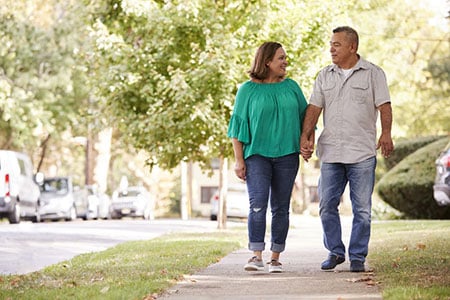
Q&A: Exercise for Varicose Veins
Question: I want to know which exercises work best since my EVLT treatment did not get me the good results that I expected.
Answer: Ones ability to exercise, and the types of exercise a person can complete, varies greatly. Speaking in generalities, exercise that benefits lower extremity venous health does not have to be significantly strenuous.
The act of walking briskly is enough to challenge the veins to be compliant. A brisk walk is a relative term depending on your fitness level and may be slow or quite fast compared to others. According to HealthCorps, one measure to quantify brisk walking is “steps per minute,” and 100 steps per minute is considered brisk walking or moderate intensity.
In warmer climates, for patients that have hip, knee, or back issues, movement in the pool is beneficial. This can include any for of shallow water leg exercises such as standing knee lifts or hip kickers. If you are comfortable in deeper water, try doing scissor kicks with your legs while hanging onto the side of the pool. Kick one leg backward and one leg forward at the same time like opening and closing a pair of scissors.
For patients who enjoy yoga and other movement/stretching activities, these are appropriate as well. An article posted by StyleCraze describes 7 yoga poses that help with varicose veins. These mostly include leg elevation poses that help ease leg pressure you may be feeling.
In conclusion, anything that gets the body up and moving tends to benefit sufferers of chronic venous insufficiency. An important thing to remember is all of these tips lower the risk of developing deep vein thrombosis (DVT).
